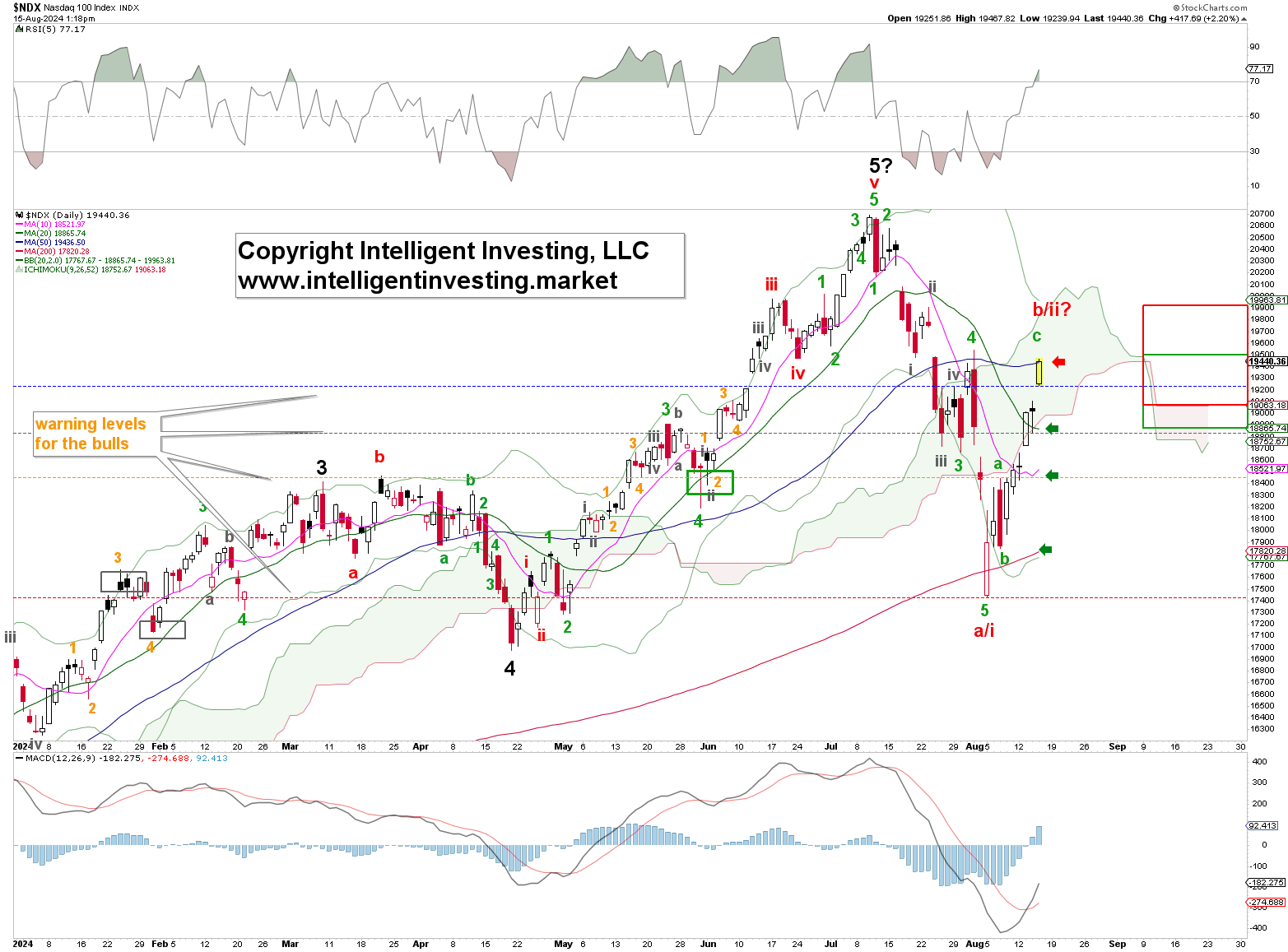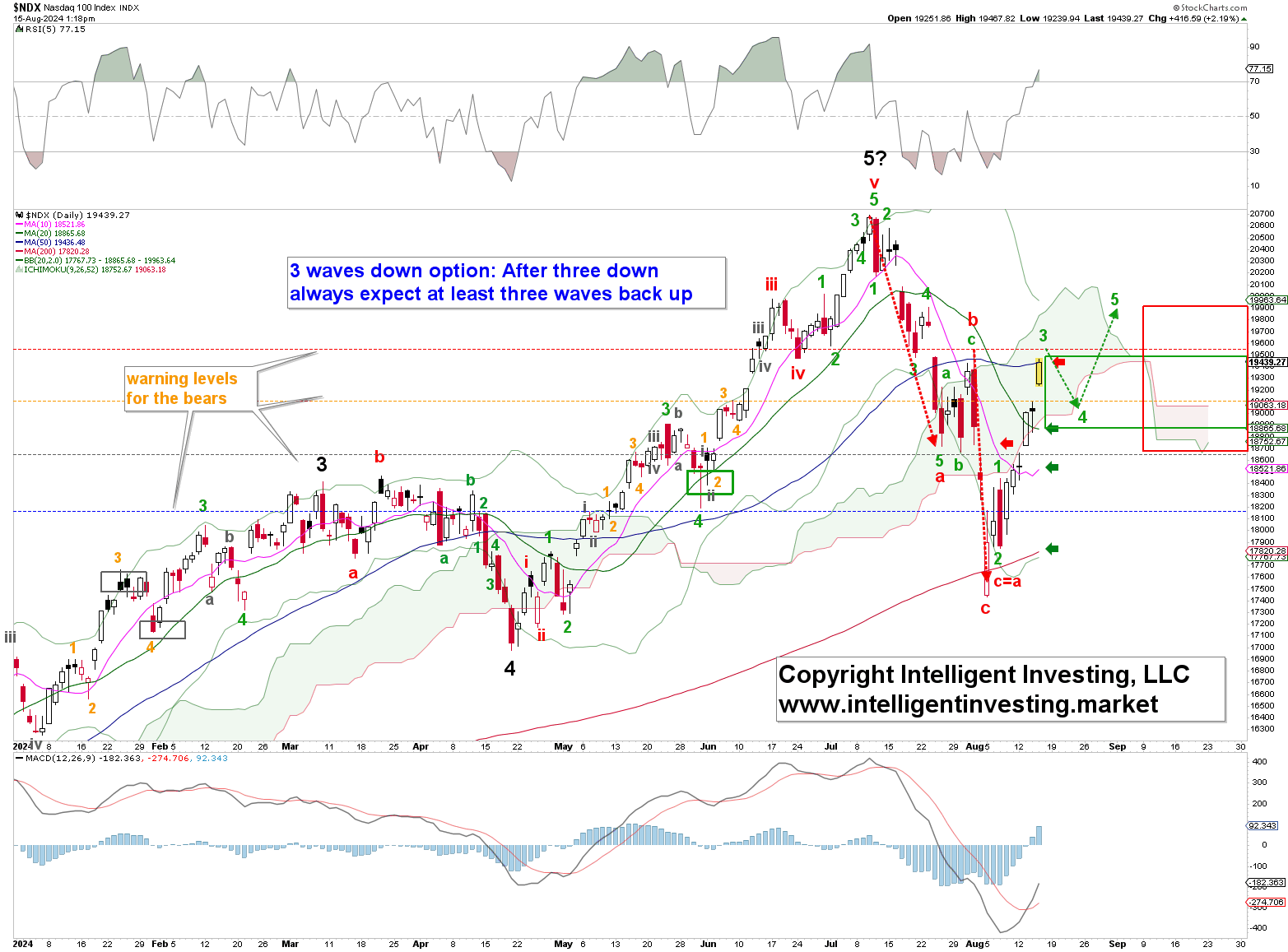We primarily use the Elliott Wave Principle (EWP) to forecast the financial markets, such as the Nasdaq 100 (NDX). The EWP allows us to identify the potential paths the market can take based on known patterns, which must adhere to specific price-based rules. Since we cannot predict the future, the EWP can help us identify the most likely path. However, since financial markets are non-linear, stochastic, and probabilistic, we must, like any other forecasting discipline, always “anticipate, monitor, and adjust if necessary.”
That said, in our update from July 5, we found that the index would top out at,
“…ideally the 200.0% extension at $20665+/-50.”
The index peaked at $20690 on July 10. By last Monday, it had lost over 15% at the open, which brings me to our latest update from August 1, where we shared our preferred path,
“A move below Monday’s low will confirm the green W-5 of the larger red W-a/I [to ideally the support zone at $18200-400]. From there, the red W-b/ii back to ideally a 50-76.4% retracement of the red W-a/i must be anticipated: $19300-800.“
On that dreaded Monday, August 5, the index bottomed out at $17435, which was 4.2% below the ideal target zone. Thus, we got the direction right but the magnitude wrong. However, the index did rally from there as expected, and it is now trading in the $19420s. See Figure 1 below. Overall, our scorecard is 2.5 out of 3 over the last six weeks. So, the question now is, “What’s in store for the markets next?”

The red W-b/ii countertrend rally has reached the $19300-800 target zone, the 50-76.4% retracement of the red W-a/i. Moreover, the green W-c has also almost reached the 1.618x W-a extension at $19500, measured from the green W-b low. However, the green W-c doesn’t have to peak at that level and can easily extend to the $19800 region.
As such, we have raised the Bulls’ colored warning levels to tell us below which levels further upside becomes less and less likely. Lastly, the red W-b/ii can become more complex, i.e., protracted, and the current rally could only be W-a of W-b/ii. But that’s a story for another day and just a potential so we won’t dwell on it.
Due to last week's deeper-than-expected decline, our alternative scenario is that the decline comprised only three waves. See the red W-a, b, and c in Figure 2 below.

Namely, the index reached an almost perfect potential c=a target at last Monday's low. Three waves lower is often the hallmark of corrective price action. Thus, the index could work on a new impulse higher, the green waves 1-2-3-4-5, ultimately leading to new all-time highs.
The green W-3 should wrap up, followed by a green W-4 and 5. Ideally, the former should stay above $18700 to allow the latter to reach $19950+/-50. However, given that we can count five larger waves up from the critical October 2022 low into the July high, which we will show in our next update, it -for now- remains our alternative scenario.
